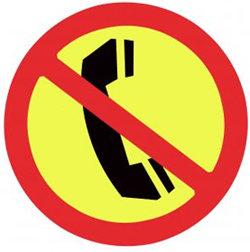Impressions of customer service — good and bad — can be long lasting as these three stories illustrate. In this post my marketing colleagues and I share special situations we experienced as customers more than 20 years ago.
“A legendary service experience that touched my heart”
From Toby Bloomberg: “I walked into an Eckerd Drug Store to buy a sympathy card. Before the clerk even rang up the purchase, he took a silk rose from a display at the counter, presented it to me, and said, ‘I’m sorry for your loss. I hope this will cheer you up a little.'”
Toby’s takeaway: There were no dramatic gestures, no casts of thousands, no high cost involved. Simply an elegant approach to ‘service’ between two people. And when you get right down to basics, isn’t that what “legendary service” is all about — people who go the extra mile to connect to the customer?
Take care of the customer and worry about the details later
From Chris Bonney: “It was a Saturday around noon at the Hyatt Woodfield in Chicago for an AMA (American Marketing Association) chapter leadership meeting. Just as our people were sitting down to lunch, the first alarm went off. We were quickly hustled outside by the staff and stayed outdoors for the better part of an hour due to a water emergency.
“A couple of weddings were scheduled to take place at the hotel later that day. One of the brides arrived that morning and, not finding a closet hook high enough to hold her wedding gown off the floor, she hung it on a fire system water sprinkler. The weight eventually broke the sprinkler head, spewing rusty water all over the gown in her room and other rooms on the floor that were linked on that sprinkler water line. The water also leaked through to rooms below the bride’s floor. The hotel could have easily blamed the bride for her misfortune and the inconvenience caused to everyone else in the hotel. But instead they summoned a limousine, took the bride and her mother across to the Nordstrom’s at Woodfield Mall to buy a new dress.”
Chris’s takeaway: I don’t know if the hotel was insured for this kind of thing or not. But they knew that it was cheaper for the bride to get a new dress so that her wedding could proceed and worry about the details later. They recovered the situation without embarrassing the bride and her family. (Perhaps as a result, hotels posted warning signs to not use sprinkler heads as hangers.)
This is my story: My husband and I were traveling to Boston to attend a conference for his work when I had a medical emergency on the plane. Upon landing at the airport, I was immediately taken off the plane in a special ambulance gurney and we were whisked away to the hospital. While filling out our medical forms in the ER, my husband and I suddenly looked at each other to ask, “What happened to our luggage?!” given we left the plane in a hurry.
My husband took a taxi to the conference hotel while I was in surgery and explained our situation. The Marriott Copley Hotel staff called Logan airport to find and place a hold on our luggage. They also arranged for a hotel courtesy car driver to take my husband back to the airport to collect the luggage, drop him off at the hospital to be with me after surgery, and then place our luggage in the hotel room for when my husband returned.
My takeaway: In our situation, we were guests who arrived at the hotel with a problem that had nothing to do with the hotel itself. Yet the front desk staff showed their compassion and concern by going the extra step take care of us.
My colleagues and I had different customer experiences that share a common theme: a favorable impression made by customer service providers who were empathetic to their customers’ situation.










